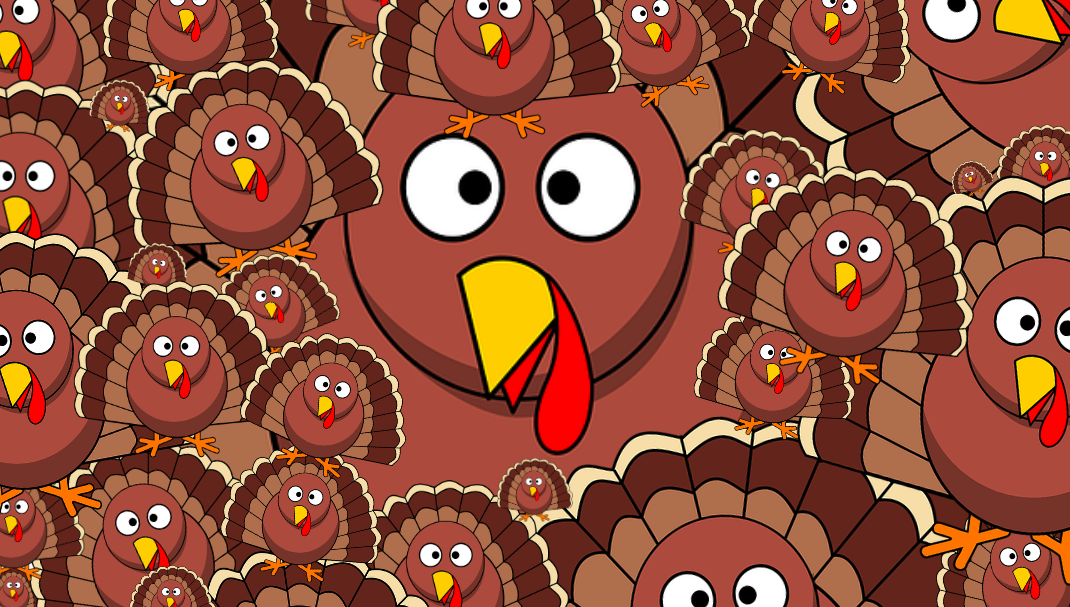John Tolley, November 26, 2019
Every week, BTN LiveBIG?s B1G Bites brings you the latest news from around the conference on the topics of health, environmental issues and economic innovation. This week that news is coming to you via the lens of one of our most delicious national holidays, Thanksgiving.
These stories showcase the breadth and depth of research occurring at our 14 member universities. From robotics to recycling, smart agriculture to spirited entrepreneurship, the Big Ten is committed to pushing boundaries that will help build a more prosperous, peaceful, just, clean and healthy future for generations to come.
Remember, these B1G Bites are just the tip of the iceberg. For more, please check out the BTN LiveBIG archives.
Maryland: Students' food charity has more mouths to feed
?We?ve become the largest student movement against hunger in America,? said Ben Simon, co-founder and executive director of Food Recovery Network. ?We started about three years ago and are now at almost 100 colleges across the country. Food Recovery Network?s chapters all across the country have donated over 420,000 pounds of food, which amounts to over 360,000 meals to hungry Americans.?
That expansion is especially impressive given that FRN was founded on a seemingly unappealing idea: college kids? leftovers. But Simon is quick to point out that people in need aren?t getting pizza crusts or mystery meals in Styrofoam containers at the back of students? refrigerators.
?When we talk about surplus food, we?re not talking about the student who orders a sandwich, eats half of it and throws the other half away,? he said. ?We?re talking about the food that has been prepared that day, but has not been served yet to the students. When you?re serving thousands of students every single day through dining services, it?s hard to not generate any surplus.?
Purdue: The science behind the flavors of a Thanksgiving meal

Cordelia Running, an assistant professor in the College of Health and Human Sciences and director of the SPIT Lab at Purdue University, researches the science behind the physical and mental processes that influence the flavors of the food we eat.
*From plate to palate: The flavors of a Thanksgiving meal are the result of a combination of tastes - sweet, sour, salty, bitter and fatty - aromas and other sensations, as well as what happens during digestion as the body absorbs the calories, Running said.
?It?s all the sensations coming together, such as taste, which can be sweet, sour, salty, bitter, maybe fatty. Then you?re starting to get that aroma, too. You smell it when you walk in the room, but you experience it a little differently when it goes up the backside of your throat and into your nose. Then you also start digesting it in your mouth from the activity of the enzymes in your spit, from the mashing of your teeth, until it reaches the right consistency to swallow.?
Nebraska: Cather baker brings five-star confections to students
Cheesecake marbled with blueberry puree sits next to a frosted three-layer German chocolate cake. Cookie crumbles and chocolate swirls adorn an Oreo cream pie. Dark chocolate embellishments are an alluring contrast to the top of a mocha chocolate cheesecake. Nearby, a pastel rainbow of macaroons is nestled next to petit fours dipped in icing. On any given day, Nebraska students can choose from more than two dozen delectable desserts like these.
Each piece in the tantalizing variety of confections resembles a work of art. That?s largely due to the efforts of desserts team leader Diemhong ?Hong? Tran, who does nearly all of the baking, in-house, from scratch.







